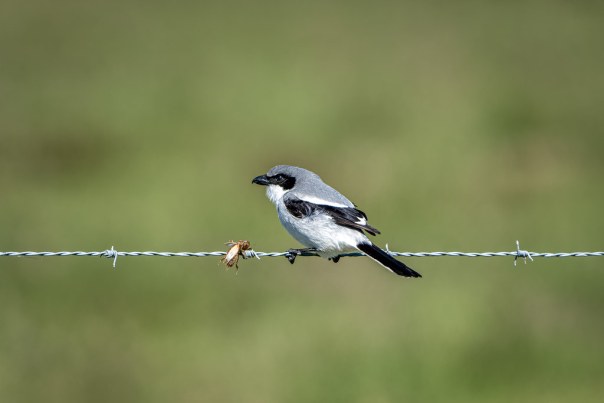With all the bad news about the novel coronavirus pandemic and the economy / stock market, blogging about photography doesn’t seem too important, does it? But maybe photography can distract you from those headlines for a bit, like it distracted me last Wednesday morning.
I made a solo trip over to Merritt Island National Wildlife Refuge and spent a few hours enjoying nature. I started on Gator Creek Road before dawn, and then went round Black Point Wildlife Drive. When it was about time to head home, I decided to make one more pass through Gator Creek Road before I left. I’m very glad I did.
As I went past where Catfish Creek Trail branches off, I heard a loud group of birds squawking in the distance. I decided to back up and go and see what was making such a big racket. I found hundreds of (mostly) Laughing Gulls along with a few terns and skimmers in the water – all making noise. They were a little too far away for good photos, but on the other side of the road I spotted several circling Ospreys.
They were looking for fish in Catfish Creek. I stayed for 15 minutes or so watching and photographing. They dove and missed a few times and then I saw this one plummeting toward the water.
The splash was huge and things were happening very fast. It wasn’t until it gained some altitude that I could clearly see it had a fish.
That looks like a Spotted-seatrout to me (https://myfwc.com/wildlifehabitats/profiles/saltwater/drums/spotted-seatrout/). Those are great eating. We used to fish for them in Mosquito Lagoon when we lived in Port Orange
I’ve seen Ospreys fishing before, but these are the best photos I’ve been able to get of an actual catch. It’s exciting to see something like this in the wild. My experience is that you have to be lucky to photograph it when it happens. Thank goodness those gulls were calling or I’d have driven right by!
You can click on these photos to see higher resolution versions on Flickr. You can also visit these related Flick albums:
- MINWR: https://www.flickr.com/photos/edrosack/albums/72157627776386723
- Birds in flight: https://www.flickr.com/photos/edrosack/albums/72157626306397920
- Florida Landscapes: https://www.flickr.com/photos/edrosack/albums/72157627451713116
On a side note: I’ve been enjoying our bug free weather here but I noticed when I got home from this trip that I had several mosquito bites. Time to break out the bug spray – I think our Central Florida spring may already be just about over.
I hope that all of you make it through our current troubles unscathed. Thanks for stopping by and reading my blog. Now, stay safe – and make some socially distanced photos!
©2020, Ed Rosack. All rights reserved











































 T
T





















